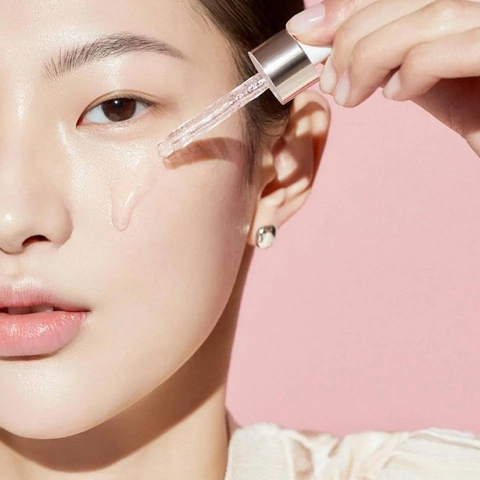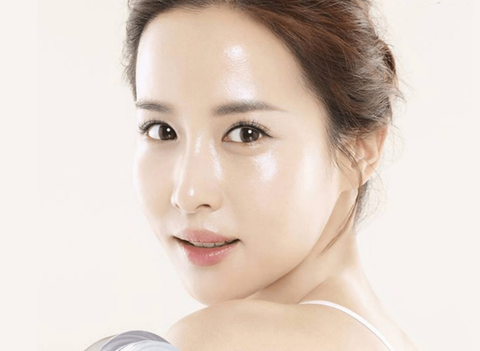
- 0 comments
- by Minase Suiren
Japanese vs Korean skincare: Unveiling the key differences
- 0 comments
- by Minase Suiren
For Japanese and Korean cultures, skin care is not a chore; it's part of their lifestyle. And while both cultures are powerhouses in the world of beauty and skin care, there are some key differences between them. Find out the key difference between Japanese vs Korean skincare routine with Japan with Love today.
>>> Related post: Elevate your skincare routine with these luxury Japanese skincare brands
Japanese beauty's skincare routine focuses on achieving “mochi skin” regarding the skin type they want to achieve. As for skin care, Japanese beauty's core value is nourishing skin with gentle and nutritious products to achieve "mochi skin." If you are unfamiliar with mochi, mochi is a soft and filling snack made from sticky rice. “Mochi skin” is almost like a baby's skin because it is very soft, hydrated, and wrinkle-free.
With Japanese beauty, less is more, so most routines involve about 5 to 6 exfoliation steps one to two times a week. You want to give your skin time to rest and rejuvenate, so it's best not to use too much product.

Japanese vs Korean skincare approaches differ notably, and Japan’s philosophy centers around minimalism and tradition. Japanese skincare emphasizes natural, time-tested, and luxurious ingredients used for centuries. With a strong cultural pride in skincare rituals, Japanese beauty routines focus on quality over quantity, favoring gentle, effective products and consistent, simple care for long-term skin health.
The Japanese skincare routine has 5 steps, which is very short compared to many other skincare processes. According to a Japanese beauty article, the steps in the Japanese skincare routine are arranged in the following order: cleansing, lotion/essence, beauty serum, lotion/cream, and anti-aging cream.
To clean, Japanese people often clean their faces twice, especially at night after a whole day of makeup. They will use a gentle Japanese oil cleanser (or sometimes a facial cleanser) and a foaming cleanser to remove any visible impurities both on the surface and deep within the pores.

Toner is called lotion (or essence) in Japan. Although they may serve similar purposes, such as regulating sebum secretion, Japanese creams and essences tend to be more hydrating and gentle on the skin and have a lower acid content. You can also use a sheet mask for this step, but you don't have to use it all the time, just once or twice a week!

When comparing Japanese vs Korean skincare, this step is what makes this Japanese skin care routine even more personal. The products used in this step may vary from person to person, depending on the skin type they have. Some people may lack moisture in certain areas, while others may worry about spots and scars caused by acne.

Using emulsions (lotions) and creams is the key to achieving “mochi-like” skin. Without moisturizer, you won't be able to replenish your skin with essential oils, and that will prevent the evaporation of moisture in the lotion from the previous step. A simple similarity in the purpose of these two products is that they functions like “a lid.” If you have oilier skin, it is important to use an emulsion; if you have drier skin, it is important to use a moisturizer.

Japanese people are very concerned about sunlight no matter where they are. Achieving healthy and glowing skin will be difficult without sunscreen, so wearing sunscreen is a must!

>>> Add Ipsa Skincare Powder Medicated Skin Care Whitening Night Care 25g - Loose Powder into the Japanese skincare routine to help increase the freshness and shine of your skin.
Take a trip to Korea, and you'll be transported to a world of skincare and beauty boutiques filled with amazing products, unique ingredients, and cutting-edge technology. While Japanese skincare uses tried-and-true ingredients, Korean skincare is unafraid to take risks and get creative.
One of the key difference between Japanese vs Korean skincare is that Korean skincare brands are always at the forefront of trends and strive to create new, exciting products and ingredients. This is why many Korean beauty products have a texture and consistency that differentiates them from standard cosmetics.
Compared to Japanese matte mochi skin, Korean skincare is all about glassy dewy skin - skin so hydrated and reflective that it looks like a sheet of glass (glass skin). Korean skincare products use many hydrating ingredients and targeted products, such as ampoules or serums, to achieve this look.

As you may know, the Korean skincare process has more steps than the Japanese skincare process. The number of steps used in a Korean skincare routine can range from 7 to 12, but the most common number is around 10. There are many steps, but each step in the Korean Skin Care routine is important to achieving “glass skin.”
The steps are as follows: balm/oil cleanser, foam cleanser, exfoliator, toner, essence, ampoule/serum, sheet mask, eye cream, moisturizer, and finally, Thicker night cream/sleeping mask/sunscreen.
Korean skincare has a method similar to Japanese skincare regarding cleansing. That is, “double cleansing!” For the first step of double cleansing, it's important to use a balm or oil cleanser to remove makeup and dirt on your face!

As the second step of double cleansing, using a foaming cleanser to remove any product or dirt left on your skin is important. You can use different types of water-based cleaners: milk, foam, gel, etc.

Exfoliating your face at least once or twice a week is important to remove dead skin cells. There are different types of exfoliants, such as physical or chemical exfoliants, so it's important to choose an exfoliator depending on your skin type. Considering Japanese vs Korean skincare, most Korean exfoliating products are exfoliating cotton pads that contain exfoliating properties.

Toner is an essential step that helps the skin absorb all the water moisturizer provides in the following steps. You can also use facial mist, a great toner alternative!

Essence is very important when moisturizing the skin. Preparing your skin to use other products in the next steps will be difficult without essence. The key tip here is to apply the essence as if you were soaking your skin.

This step is the most personal step for your skin. The syringe/serum is the step that defines your skincare routine, especially when it comes to Japanese vs Korean skincare.
In the Korean skincare routine, you can continuously use many types of serums within that range. Some serums contain ingredients like hyaluronic acid, fatty acids, vitamin C, peptides, and minerals that help treat your skin depending on your needs.

Sheet masks are important to the Korean skincare routine, and I bet many people associate them with Korean beauty, as they are essential skincare products in Korean beauty culture. The purpose of a paper mask is to help moisturize the skin down to the deepest layer of the skin.

Eye cream is important for all ages, for all routines of Japanese vs Korean skincare because it's never too early to start caring for the moisture around your eyes. It will help care for fine wrinkles and visible dryness in your eye area.

Although many other steps help moisturize the skin, this step is the queen of moisturizing and helps "glue" everything together. Moisturizers don't have to be creams but can be liquid or gel-based, depending on your skin type and preferences.
There are many other steps before this one. However, this step is the “cherry on top.” This step is essential to perfect this skincare routine further, but it depends on your skin's needs. In the morning, you need to use sunscreen. If you come back from a really dry environment or your skin is extremely dry, you may need to apply a thicker night cream or sleeping mask.

This is just my suggestion! The best way to know which procedure is right for you and your skin is to try both procedures. It really depends on you and what you want to achieve. But there may be some factors that may suit you better than others:
Below, we’ll explore key questions that highlight the differences between Japanese vs Korean skincare and help you decide which is right for your routine.
Japanese vs Korean skincare depends on your needs—Japanese focuses on minimalism and prevention, while Korean skincare emphasizes layering and innovation. If you prefer a gentle, simplified routine, Japanese may suit you. But for brightening and hydration, Korean skincare might work better. Korean vs Japanese skincare both have strengths.
Both Japan and Korea lead in beauty innovation. Japanese vs Korean beauty showcases unique philosophies: Japan values tradition and simplicity, while Korea thrives on trends and technology. Korean vs. Japanese skincare—which is better? It’s subjective and based on skin type, goals, and product preference.
Many attribute Japanese skin quality to diet, sun protection, and gentle Japanese skincare routines. Green tea, fish, and rice-based diets aid skin health, while daily sunscreen use prevents aging. This consistency in the Japanese vs Korean skincare approach emphasizes prevention over correction, contributing to smooth, healthy skin.
In conclusion, Japanese vs Korean skincare offers unique approaches to achieving beautiful, healthy skin. While Japanese beauty prioritizes simplicity and long-term care, Korean beauty embraces innovation and customization to target specific concerns. Ultimately, the best choice depends on your individual needs and preferences. Remember, the journey to healthy skin is personal. Don't be afraid to experiment and find a routine that makes your skin feel and look its best! Follow Japan With Love for more useful tricks and exclusive deals on skincare products.
Share:
Top 5+ Japanese bar soaps that feel amazing on your skin
Top 5+ Japanese bar soaps that feel amazing on your skin